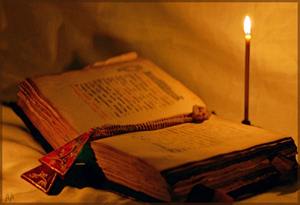Home page
» ART
» Ancient libraries of Azerbaijan
Ancient libraries of Azerbaijan Although the development of the art of bibliography in Azerbaijan related to the XI century BC in fact, its history dates back to very ancient times. First libraries in the area we live were appeared in old times at the establishment of state institutions. As it is known from history in V century AD, in the Caucasian Albania an Albanian alphabet consisting of 52 letters were prepared. Thus, many books have been translated into Albanian, in churches and schools small libraries were organized. But after spreading of Islam in Azerbaijan in mosques and madrasah -religious schools libraries and book culture has been spread. The first private libraries The creation of rich libraries in Azerbaijan has been associated with a number of well-known persons. One of these persons is a student of Ibn Sina, philosopher Abulhasan Bahmanyar (993-1066). One of the most beautiful libraries in the XI century was Bahmanyar’s private library. This library was full of books and Bahmaniyar turned it into center of the scholars’ exchange of ideas. His own works also occupied enough space in the library. Bahmanyar’s famous Book of Education had gained a great popularity to the author not only in Azerbaijan but all over the world. Work has been translated into Arabic and Persian. One of the Persian duplicates copied in following years is kept in Uzbekistan, in the Institute of Oriental Studies named after Biruni, and other copy in the library of the Iranian Parliament\'s National Council. Arabic manuscript copies of the work are being protected in a number of libraries around the world (Beirut, Istanbul, Cairo, London, Vatican City). Most of the authors of XII and XIII centuries in their works cited the name of Bahmaniyar as unique book creator, scientific martyr and as a scholar having strong influence on many writers coming after him. Khatib Tabrizi\'s library One of the persons who had invaluable contribution in development of Azerbaijani book was Khatib Tabrizi (1030-1109). Kh.Tabrizi had the richest private library in Tabriz. He had taken Tahzibul-luga (Cleaning of language) book of Azerbaijani scholar Abu Mansur Muhammad al-Azhari (895-980) to clarify some difficult matters found by him while researching the book, to Arab philosopher Abul-ula Muarri (973 -1057) to Baghdad and the rest of life lived in Baghdad, where he was buried. Known as the first literary theorist of Azerbaijan Kh.Tabrizi had taken with self some books from his private library as a gift to Arab scientist while going to A.Muarri. When he was buried in Baghdad, the exhibition of those books (17 titles) and all of his works have been arranged here. N.Tusi’s (1201-1274) contribution in collection and delivery of Azerbaijani and world book samples to future generations is invaluable. According to historical sources, while being in prison more than twenty years in Alamug castle in the north of the city of Qazvin Tusi worked as the director of the library, which was established by Hasan Sabbah. By order of Hulaki khan Tusi was released from jail in 1256. After finding out that Tusi was of Turkic origin Hulaki khan appointed Tusi as his chief advisor. After that Tusi had arranged a library in the Maragha observatory built by order of Hulaki khan and had collected here from around the world over four hundred thousand books. A large part of these books was collected from Baghdad, Damascus, Algeria, Mosul and other cities. Unfortunately, despite all of hundred works of Tusi from library built during years 1258-1261 reached us but there was no trace of Maragha observatory. Reshidaddin and Rashidiyya libraries The further development of libraries After the Middle Ages, when the bibliography was developed there were several kinds of library - of palaces, religious, academic and special libraries scientific and private. From Palace libraries the Shirvanshah Palace (XII century), Tabriz libraries (XIII century), Aggoyunlu, Garagoyunlu, the Safavid palaces (XIV-XVI centuries) should be noted. Among palace libraries Tabriz palace library established by the well-known public figure in XIV century Shah Ismail Khatai played an important role. In 1522, Shah Ismail Khatai has signed a decree on the state library. Among religious libraries of that period Shaykh Safi observatory library of Ardabil, and among scientific libraries, the library of Maragha Observatory (XIII century) with more than 4000 000 books in its fund, played an important role. Since the 40-es of the XIX century, new national public libraries, as well as the personal libraries of many well-known figures began to form. During 1905-1907 intellectuals working for the development of the national culture had arranged charity organizations, tried to promote the publication of books, opened the library and reading places. During the Azerbaijan Democratic Republic (1918-1920-years) the Library named after M.A.Sabir and the Library of Baku State University were created. In 1920, there were 965 school libraries in Azerbaijan. In Baku and its suburbs about 50 and more than 100 libraries in the districts and villages operated. According to the official facts, at present, there are over 12 thousand libraries in our country. For more information about libraries please select the link http://www.azerbaijans.com/content_161_az.html
|
